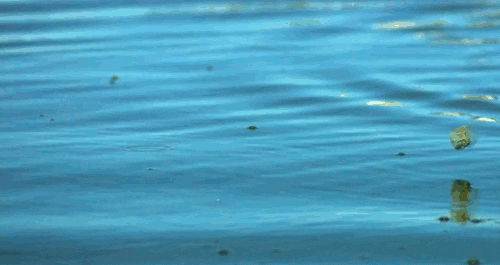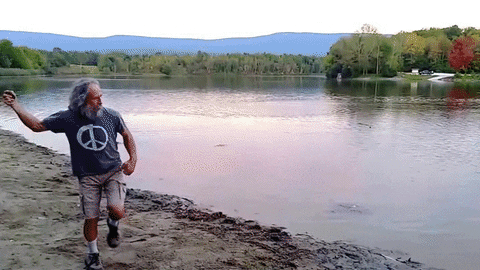
If you’re the type of person who likes to have fun outdoors, then you already know that spending time with nature is the best option. The natural world offers endless amounts of its own resources for us to consume, survive upon, and even play with. One such form of entertainment it offers comes in the form of a very physical game – skipping stones.
Those who know about skipping stones or have done it in the past know very well that it is a strange combination of hard work and a whole lot of fun. You may look at people tossing rocks and think they’re crazy, but it won’t be long before you’re also hunting for the perfect pebble to compete with the other stone skippers. Don’t be too jealous; they are throwing rocks, after all!
It’s amazing to see those stones skim across the water, seeming to jump 2, 5, or 12 times across the water’s surface. But how does it do that? What makes the stone skip over the surface of the water without sinking after the first toss?

Before we go any further with the science of the game, let us first explain the game to those who don’t know much about it. Skipping stones is a simple game that involves two basic things; a stone or a pebble and a body of water, like a pond or a lake.
As the name suggests, skipping stones involves doing your best to skip a stone off the surface of the water. What you do is find a flat-smooth stone and toss it at the surface at a low angle so that it bounces, rather than sinks. Ideally, the stone should skip more than once. First-timers usually struggle, but to be good at skipping stones, you need good stones and great technique. Be patient! The game is essentially about getting the most skips out of your stone. Anything over 4-5 is pretty good, but the best stone skippers in the world can get well into the double digits!

Credit: Giphy
When children innocently ask head-scratching questions such as “Why is the sky blue?” most parents manage only some sheepish hems and haws. But when physicist Lydéric Bocquet’s 7-year-old son asked him why a good throw makes a stone skip on a lake instead of sinking, Bocquet took the question as a challenge. He produced a set of equations explaining the physics underlying the popular pastime.
Two key forces act on a skipping stone: gravity, which pulls it down. And lift, the reactive force of the water, which pushes the stone up each time it hits the surface. If the lift force is greater than the force of gravity then the stone bounces up; otherwise, it sinks.
The best skipping stones are flat and should be hurled nearly parallel to the water, fast and spinning. The stone’s flatness maximizes the lift, as does its speed. The speed also provides the energy to keep the stone bouncing along. These are the same factors that keep a water-skier from sinking. Spin prevents the stone from tilting and hitting the water edge-first, just as fast rotations stabilize a bicycle or a spinning top.

Credit: Giphy
Speed, spin and the right stone. There is yet another very crucial ingredient missing in your kit if you want to be a master of skipping stones. Scientists say, “magic.” Almost. All right, so scientists actually say, “magic angle.” To skip, the path of the stone must be at an angle of twenty degrees to the water. The question is, why is twenty degrees the best angle?
Sure, stones will skip if they come in at a shallower angle, but not as far. Chuck them in at an angle of greater than forty-five degrees and they’ll just sink sullenly into the water. So if you want to achieve the maximum number of bounces across water, 20 degrees is the best angle you should go for.
Kurt “Mountain-Man” Steiner currently holds the Guinness World Record for the most consecutive skips of a stone on water.
On September 6, 2013, Steiner managed to get his skipping stone to touch the water 88 times!
But his achievement was not a stroke of luck. The truth is that he had been training for years for the moment.
Kurt collects several thousands of “quality stones” and sorts each according to its type to have the best possible throws.

Credit: Giphy
There are different shapes for different skips and conditions, just like a surfer or skim boarder picks a board from his quiver for a specific type of wave.
It’s paramount to choose your weapon wisely – “Mountain Man” has triangle, square, and circle-shaped stones for all situations.
He developed his own tossing style, which somehow defies science’s paradigms regarding optimal skimming stone formulae.
Steiner prefers to throw his stones fast at 30 degrees to an imaginary horizontal line, swiveling his shoulder back and bringing his arm like a whip.
When the stone is thrown, it looks like it is going almost directly into the water, except by the time it hits the water, it’s not actually going directly down and then comes out at about five degrees. Funnily enough, Kurt never counts his skips!
Also read about Cricket ball swing physics.
Raza has been writing since 2008, be it fiction, poetry, or articles on science, politics, and history. He believes that words can change the world, and he uses them to inspire and empower people through his writing. When he is not working, he is watching nature documentaries or playing with his cats.